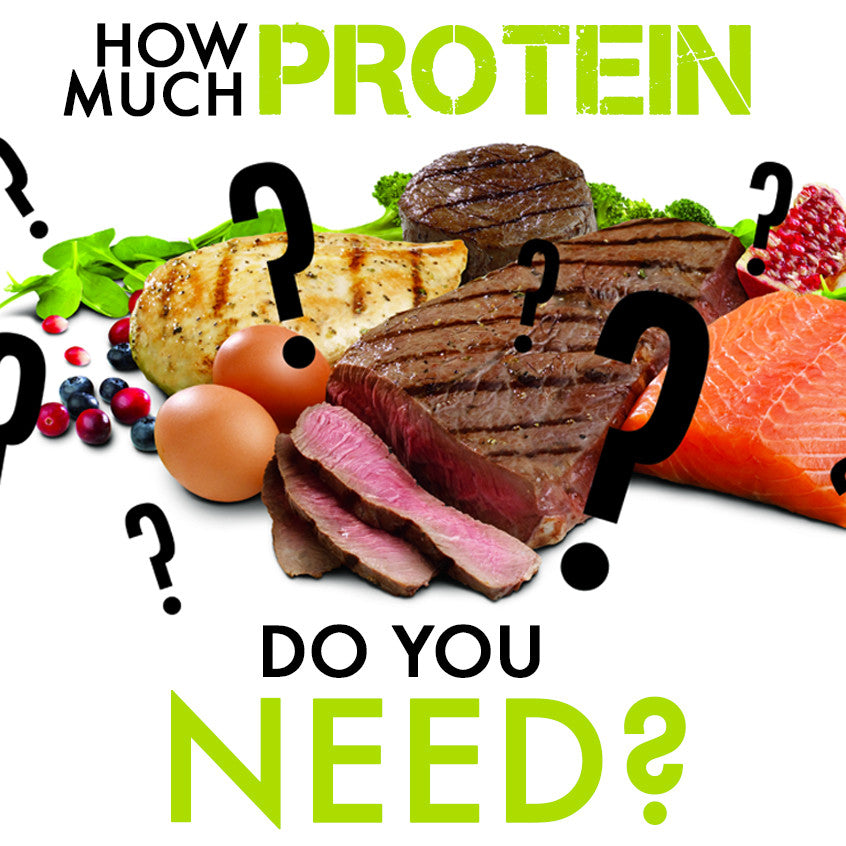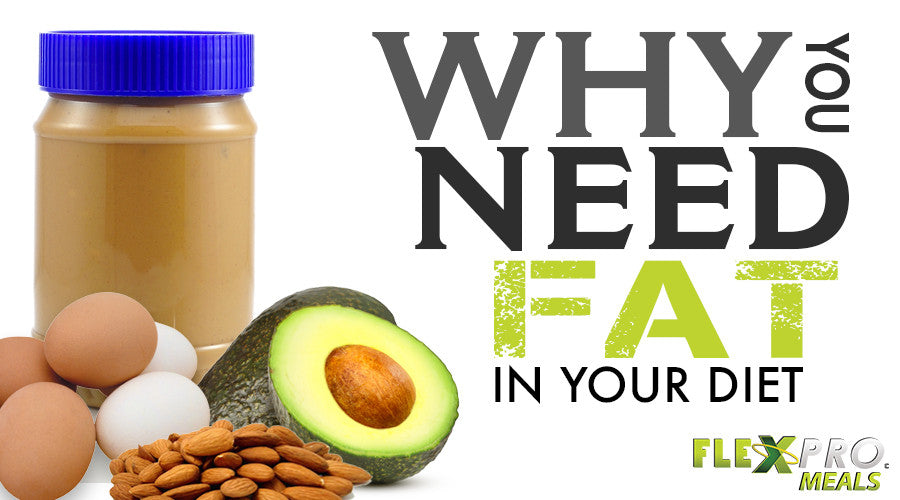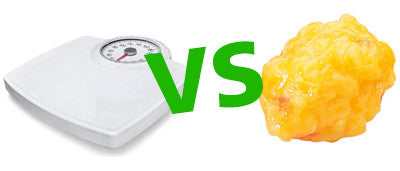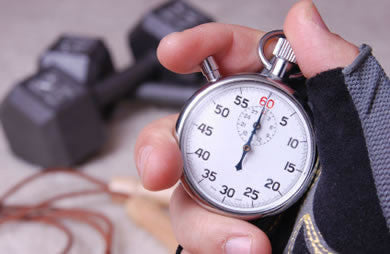Your cart
Order special instructions
Discount
Discount invalid. Please make sure the discount details are correct.
Discount code is already applied.
Discount applied!
FLEXPRO CONNECT

FLEXPRO CONNECT
by Mackenzie Diekmann on Mar 04 2016
A few things to help keep your results coming!
Whether you're a seasoned athlete or you're just getting into fitness, recovery is a necessary component to the whole equation that is often overlooked. Recuperating is an important step in reaching your fitness goals even if it doesn't feel like it. Believe it or not, it is possible to over train. This happens when you don't give your body the time required to repair its muscles, tendons, ligaments, and bones. Overtraining can actually make your workouts more harmful than effective. Here are the 8 laws of rest and recovery to prevent you from becoming the next victim of overtraining: 1. Sleep Sleeping is not only important because no one wants to be around you when you're crabby; it is also the time when your body does the most repairs. Plus, a good night's sleep will keep you from dragging through that next workout. Most adults need anywhere from 7-10 hours of sleep per night. 2. Stretch Stretching will keep you flexible enough to go through the daily motion without hurting yourself as well as keep sore muscles from burning near as much. Try doing ballistic stretching (moving stretches) before your workout and static stretching (hold stretches for extended period of time) after your workout. Don't be afraid to also take a day out of the week and make it your stretch day. 3. Myofacial Release Ever get a deep tissue massage? That was myofacial release and you can do it yourself at home with simple tools like a foam roller. Just find those trigger spots where your muscles have tightened up or formed knots. Then stick the foam roller in that spot and put some weight on it for a little bit. It will hurt so good, but it will also help loosen and repair those muscles.
4. Take a Recovery Week or Two
Before you get all up in arms, taking a recovery week doesn't necessarily mean you have to completely stop working out. It just means you don't go quite as hard. Set a couple days aside for yoga, Pilates, or stretch workouts and then use your remaining days in the week for light cardio or lifting. This will allow your body to play catch up and repair those deep tissue tears that it hasn't had a chance to get to yet. How often you need a recovery week varies from person to person, but if you've noticed your workout performance has started to steadily decline, it's probably a good idea to take a recovery week.
5. Hydrate
Your body needs water for pretty much every process it goes through, including recovery. Why not expedite all of your body's functions by keeping it super hydrated? Not only will this speed up recovery, but it will prevent sore muscles, lower stress levels, and improve skin & hair. An easy way to make sure you are getting enough water intake is to take a look at your urine. If it's clear, you're doing great!
6. Eat Clean
Everything that you put in in your body can either help or hurt it. Alcohol and processed foods will release toxins that can be harmful and put a halt on your progress. Educate yourself on what foods are effective for your body and will help increase your performance. This is where FlexPro's healthy food delivery comes in handy!
7. Posture
The majority of Americans have terrible posture because they sit at a desk all day while slouching. This may seem like the most comfortable position at the time, but it can lead to neck, back, and even knee pain, which will then affect your workout performance. Try being more cognizant of how you are sitting and maybe even try purchasing an ergonomically correct chair if you need the extra help.
8. Compress, Ice, & Heat
Not only are these three techniques effective for nursing an injury, they can also be super effective if you do any sort of extremely stressful training. Wearing compression pants, sleeves, or shirts during your workout will help your muscles stay put and result in less muscle soreness. Taking a hot bath or icing areas that experienced the most brutality during your workout is also very effective in the recovery process.

FLEXPRO CONNECT
How Much Protein Should You Be Eating?
by Mackenzie Diekmann on Feb 23 2016
Find out how to calculate the right amount of protein for you!
Figuring out how much protein you should be eating can be super confusing for a lot of people with all of the conflicting information out there. So what's the right amount for you? The answer is-- it depends! Huge factors that figure into how much protein you should be consuming is your lifestyle and fitness goals, so not everyone will be the same. For instance, a professional bodybuilder would definitely not be taking in the same amount of protein as the average Joe who lives a sedentary lifestyle. Here is a chart that shows the suggested daily intake of protein according to your fitness goals/lifestyle:
Goals/Lifestyle
Daily Protein Intake
Muscle Building/Getting Toned
1-1.5g Protein/Pound of Current Body Weight
Weight Loss
1g Protein/Pound of Target Body Weight
Average Healthy Sedentary Person
.36g Protein/Pound of Current Body Weight
Examples:
A 180 lb guy looking to add some muscle would take in anywhere from 180-270 grams of protein per day.
A 200 lb woman wanting to lose 30 lbs should take in about 170 grams of protein/day.
How to fit all of your protein into your diet:
Once you've calculated what your daily protein intake should be, you might be thinking, "That's A LOT of protein! How am I going to get all of that in?"
Don't worry-- it's possible! The easiest way to fit all of your protein in is to divide it up into 5-6 meals per day. For instance, someone who needed 200 grams of protein a day might eat 6 meals a day with around 33 grams of protein/meal. Protein bars and proteins provide a great way to help you supplement protein into your diet without having to take the time to cook a piece of meat 5-6 times/day. Just be careful to keep an eye on their nutrition labels. Lots of shakes and bars boast that they are healthy, but harbor a crazy amount of added sugar that you probably don't need!
What ways do you add the needed amount of protein to your diet? Let us know in the comments below!

FLEXPRO CONNECT
by Mackenzie Diekmann on Feb 11 2016
For decades, fat has been a dirty word when it comes to talking about a healthy diet. When people are trying to lose weight, fat is usually the first thing to be cut, hence the "Low Fat" revolution that began almost 20 years ago. While it is true there are fats that will make you, well... fat, there are also good fats that greatly benefit your body. Here are a few benefits of healthy fats:
Great source of energy
Helps the body to absorb vitamins and nutrients
Essential for blood clotting
Essential for muscle movement
Helps inflammation
Prevents & treats heart disease
Reduces cholesterol
Lowers blood pressure
Helps prevent belly fat
Boosts brain function
May reduce risk of dementia
Types of Fats: The Bad Trans Fat- Also known has "partially hydrogenated oil", trans fat has, up until recently, been found in everything from cookies to fast food. Studies have shown that trans fat has zero health benefits and is linked to multiple chronic conditions including high cholesterol, heart disease, diabetes and stroke. For this reason, the FDA has required the food industry to list trans fat out on a separate line in the nutrition info on packaging, resulting in many food companies expelling trans fat from their food altogether. Saturated Fats- This type of fat is commonly found in whole milk, red meat, cheese, coconut oil, baked goods, and more. While our bodies do require us to have some saturated fat, the balance can be easily tipped in favor of quickly becoming too much. Most nutrition experts recommend that saturated fat make up no more than 10% of our daily calories because it has been linked to raising harmful cholesterol and forming artery blockages.
The Good: Monounsaturated Fats- Peanut oil, avocados, sunflower oil, olive oil, canola oil, and nuts are foods that are abundant in monounsaturated fat. This type of fat has been linked to many heart healthy benefits, so much so, that nutrition experts recommend replacing trans and saturated fats with monounsaturated and polyunsaturated fats. Polyunsaturated Fats- This type of fat is known as an essential fat, meaning your body needs it but can't produce it on it's own. You can provide polyunsaturated fat for your body by eating foods rich in omega- 3 fatty acids like salmon, sardines, walnuts, canola oil, flaxseeds, and more. Eating or supplementing omega-3 fatty acids have tons of health benefits including lowering blood pressure, raising good cholesterol, reducing heart problems, helping to relieve arthritis, boosting brain function and possibly even preventing dementia. Swap Good Fats into your Diet Here are a few ways to start implementing good fats into your diet while taking the bad out:
Trade regular bacon for turkey bacon
Opt for real butter over margarine
Add avocados to your salads and other foods like tacos
Make sure your peanut butter and other spreads don't contain hydrogenated oil
Take a fish oil or flax seed supplement daily
Stay away from fast food and processed foods as much as possible
How do you integrate the “good fats” into your healthy diet? Let us know in the comments below!

FLEXPRO CONNECT
Losing Weight vs. Losing Fat - What's the Difference?
by Mackenzie Diekmann on Feb 03 2016
Weight loss and fat loss are two huge buzzwords used in our society today. It seems like everywhere you turn there are products or services promising you weight loss or fat loss. Often, these two terms are used interchangeably even though they don't necessarily mean the same thing. But how are they different? Let's talk about losing weight vs. losing fat and what exactly the difference is! Let's Clear Some Things Up:
Weight Loss: When you lose body weight, which is the sum of your muscle, fat, skin, hair, bones, organs, etc.
Fat Loss: A more specific type of weight loss that occurs when only your body fat decreases.
The Problem with the scale: Most people wanting to lose weight are actually only wanting to lose body fat. When they step on the scale and see their weight fluctuating for other reasons like hormone changes, water retention, muscle gain/loss, etc., they become discouraged and confused when in reality the scale is just not a reliable tool to calculate body fat percentage. Clothes, mirrors, and pictures are all better indicators of fat loss than a scale. A tool that can help you accurately track your fat loss progress is a fat caliper. It's a cheap and easy way to measure your body fat percentage. The table below shows the ideal body fat % for men and women according to The American Council of Exercise (ACE):
Women
Men
Minimum Fat Needed to Live
10-13%
2-5%
Professional Athletes
14-20%
6-13%
Fitness Junkies
21-24%
14-17%
Average
25-31%
18-24%
Overweight
32% and up
25% and up
Train to Lose Fat, Not Muscle! Part of the fat loss equation comes with the time you put in the gym. Many people who want to lose fat quickly do tons and tons of cardio all day, every day. Cardio is great, but like all things, too much of a good thing is not so good. Doing only cardio can result in muscle loss instead of fat loss. Instead a better/smarter way to exercise is to do weight training while adding in some cardio a few days/week. HIIT Training is a great cardio option for you to add into your fitness regime. Click here to lean more about HIIT!! The Bottom Line
When it comes to losing body fat, what you eat is 75% of the battle. Eating junk, eating too much, or even eating too little can hinder any fat loss program no matter how hard you train.
Don't let the scale get you down-- you can still be losing body fat and making progress even if the scale is not moving or going up!
FLEXPRO CONNECT
10 Reasons You Should Eat Breakfast Everyday
by Mackenzie Diekmann on Dec 10 2015
For many people, mornings can be super crazy and hectic. Getting the kids up and ready, getting yourself showered and dressed, and getting off to work on time can be super challenging. This often leaves little, or no, time to fit breakfast in. However, there are many reasons breakfast is called the most important meal of the day. Here are 10 reasons why you should eat breakfast everyday:
1. Helps with weight loss and maintaining healthy weight 2. Helps control hunger throughout the day 3. Helps keep healthy blood sugar levels 4. Gives you more energy throughout the day 5. Helps your short-term memory 6. Increases concentration 7. Improves cholesterol levels 8. You are 4.5 times less likely to become obese 9. Reduces risk of Type 2 Diabetes & Heart Disease 10. Elevates your mood
As you can see, eating breakfast has some pretty great benefits. What prevents you from getting this important meal?
Have you tried our FlexPro healthy meal delivery? We help make consuming a healthy breakfast so easy, all you have to do is heat and eat! Regardless, it’s worth finding a way to fit breakfast into your busy scheduled!
FLEXPRO CONNECT
12 Benefits of Cayenne Pepper & How to Add It to Your Diet
by Mackenzie Diekmann on Dec 10 2015
It's not just a way to spice up your food!
Most people only know cayenne pepper as a spice that can add a little fire to any dish. But did you know that this spicy pepper has been used for hundreds of years for tons of other health benefits?
Here are 12 benefits of cayenne pepper and how to add it to your daily diet:
Weight Loss- Studies of shown that cayenne pepper is a natural appetite suppressant and metabolic booster which will help your body not only take in fewer calories, but also burn more calories!
Prevents Migraines- Cayenne may help to prevent migraines because it has the ability to decrease your perception of pain.
Cold & Flu Remedy- Cayenne has been shown to aid in breaking up mucus caused by cold and flu.
Allergy Relief- Forget the expensive over-the-counter meds, cayenne is a cheap and easy way to relieve those allergy symptoms.
Prevents Blood Clots- Cayenne prevents the formation of blood clots, which can aid in reducing your chance of heart attack and stroke.
Cancer Prevention- Cayenne has been shown by studies to prevent tobacco-related lung cancer, but that doesn't mean we are encouraging you to smoke!
Toothache Remedy- Cayenne is a great way to battle tooth & gum disease.
Topical Agent- For many years, cayenne has been used to treat topical issues like snakebites, wounds, sores, and more.
Detox Support- Cayenne heats the body and causes you to sweat which are important steps in releasing toxins from your body.
Anti-Bacterial- Cayenne has been used as a natural food preservative because of it's anti-bacterial properties
Joint Pain Relief- Cayenne contains something called capsaicin, which has been shown to give joint pain relief.
Digestive Aid- Cayenne stimulates your digestive tract which helps your body to digest foods easier and is also useful in relieving gas.
With all of these great benefits, there's no reason not make cayenne a part of your daily life. Getting your daily cayenne intake is easy! Add it to one of your meals or mix cayenne tea with lemon juice and honey to create a great detoxifying morning beverage. If you don't particularly enjoy the taste or heat of cayenne, you can get it in pill form from most stores that sell supplements!
Do you add cayenne pepper to your daily diet? Share below your favorite ways to integrate this beneficial spice!

FLEXPRO CONNECT
by Mackenzie Diekmann on Oct 05 2015
Get Ready to Burn More Fat in Half the Time!
If you've been to a gym or opened a fitness magazine lately you've probably have at least heard of the word HIIT, but what the heck does HIIT even mean? HIIT stands for High Intensity Interval Training, and it has very quickly become one of top trending ways to burn fat. Why? Because if done correctly you can burn up to 9 times the amount of fat than a traditional steady-state cardio workout would!How is it Done?HIIT is done by alternating high intensity exercises with low intensity exercises (or resting) for a set amount of time (20-60 seconds) and can be done with pretty much any bodyweight exercise including running, squatting, lunging, kicking, punching, jump roping, & more! Benefits of HIIT
Metabolism Increase- HIIT will speed up your metabolic rate for up to 48 hours after you've finished working out.
Fast & Convenient- Most HIIT routines are less than 30 minutes and you can literally do it anywhere since little to no equipment is required. Gone are the days of not having time to workout!
No Equipment Required- The only weight you need for HIIT is the weight your own body supplies. Most moves in HIIT routines use bodyweight exercises; although, feel free to add weighted moves to up the intensity.
Burns More Fat While Retaining Muscle- Studies have shown that over a 20 week period, people who consistently did HIIT routines burned 9 times the amount of body fat and retained more lean muscle mass over the people who just did low intensity, steady-state cardio.
Ready to give HIIT a try? Here are few example workouts for you to give a go!10 Minute Beginner HIIT Workout 3 rounds- 20 seconds high intensity, 10 seconds rest
Jumping Jacks
Squats
Jab, Cross (Right Side)
Jab, Cross (Left Side)
*30 seconds of rest in between each round
Advanced HIIT Workout3 Rounds- 45 seconds high intensity, 15 Second Rest
Burbpees
Jumping Lunges
Tricep Dips
Side Lunges
Push-ups
Tuck Jumps
Mountain Climbers
*1 minute of rest in between each round
Have you tried HIIT Before? Let us know your favorite workout in the comments below!
